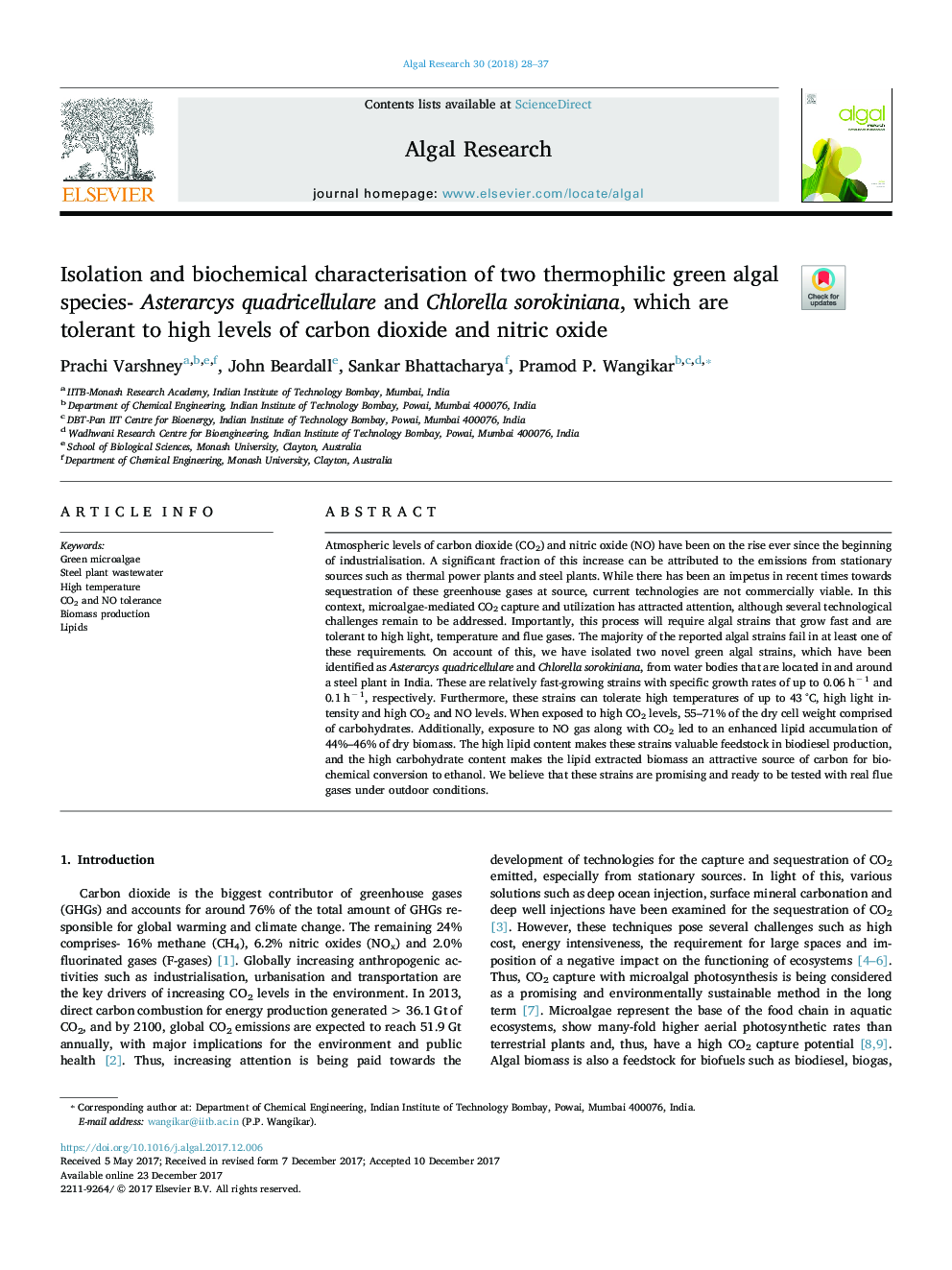| کد مقاله | کد نشریه | سال انتشار | مقاله انگلیسی | نسخه تمام متن |
|---|---|---|---|---|
| 8086017 | 1521803 | 2018 | 10 صفحه PDF | دانلود رایگان |
عنوان انگلیسی مقاله ISI
Isolation and biochemical characterisation of two thermophilic green algal species- Asterarcys quadricellulare and Chlorella sorokiniana, which are tolerant to high levels of carbon dioxide and nitric oxide
دانلود مقاله + سفارش ترجمه
دانلود مقاله ISI انگلیسی
رایگان برای ایرانیان
کلمات کلیدی
موضوعات مرتبط
مهندسی و علوم پایه
مهندسی انرژی
انرژی های تجدید پذیر، توسعه پایدار و محیط زیست
پیش نمایش صفحه اول مقاله

چکیده انگلیسی
Atmospheric levels of carbon dioxide (CO2) and nitric oxide (NO) have been on the rise ever since the beginning of industrialisation. A significant fraction of this increase can be attributed to the emissions from stationary sources such as thermal power plants and steel plants. While there has been an impetus in recent times towards sequestration of these greenhouse gases at source, current technologies are not commercially viable. In this context, microalgae-mediated CO2 capture and utilization has attracted attention, although several technological challenges remain to be addressed. Importantly, this process will require algal strains that grow fast and are tolerant to high light, temperature and flue gases. The majority of the reported algal strains fail in at least one of these requirements. On account of this, we have isolated two novel green algal strains, which have been identified as Asterarcys quadricellulare and Chlorella sorokiniana, from water bodies that are located in and around a steel plant in India. These are relatively fast-growing strains with specific growth rates of up to 0.06 hâ 1 and 0.1 hâ 1, respectively. Furthermore, these strains can tolerate high temperatures of up to 43 °C, high light intensity and high CO2 and NO levels. When exposed to high CO2 levels, 55-71% of the dry cell weight comprised of carbohydrates. Additionally, exposure to NO gas along with CO2 led to an enhanced lipid accumulation of 44%-46% of dry biomass. The high lipid content makes these strains valuable feedstock in biodiesel production, and the high carbohydrate content makes the lipid extracted biomass an attractive source of carbon for biochemical conversion to ethanol. We believe that these strains are promising and ready to be tested with real flue gases under outdoor conditions.
ناشر
Database: Elsevier - ScienceDirect (ساینس دایرکت)
Journal: Algal Research - Volume 30, March 2018, Pages 28-37
Journal: Algal Research - Volume 30, March 2018, Pages 28-37
نویسندگان
Prachi Varshney, John Beardall, Sankar Bhattacharya, Pramod P. Wangikar,